Schwalbe Albert Radial
Diameters Offered: 27.5’’ and 29’’
Widths Offered: 2.5’’ and 2.6’’
Versions Offered:
- Casings: Trail Pro Radial & Gravity Pro Radial
- Rubber Compounds: Addix Soft & Addix Ultra Soft
Blister’s Measured Widths (Albert Trail 2.5’’ on 30 mm internal-width rim):
- Casing: 2.28‘’’
- Tread: 2.40’’
Blister’s Measured Weights (29’’ diameter, Trail casing, Addix Ultra Soft): 1,155 and 1,166 g
MSRP: $101–108 (varies by version)
Reviewer: 6’, 160 lb / 183 cm, 72.6 kg
Test Locations: Washington, Arizona, & California
Test Duration: Nine months
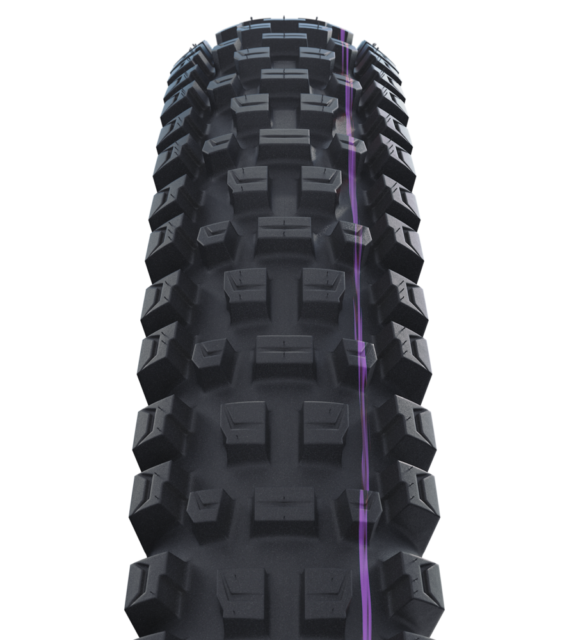
Intro
I almost feel like I need to open this review with a slight mea culpa: we’ve had a lot of folks writing in to ask when it would be done, and it has admittedly been a long time coming. The timing just didn’t work out well. I started spending time on the new radial-casing Albert tire last fall, when my local trail conditions promptly got wet and greasy (and stayed that way through the winter). For months, the Albert — being designed for firmer, dryer conditions — unsurprisingly felt like the wrong tool for the job.
Of course, we test most products in a wide range of conditions and terrain, especially if they’re explicitly designed around versatility. But if a given product isn’t intended to ‘do everything,’ we want to spend significant time with it in the scenarios in which it is supposed to excel.
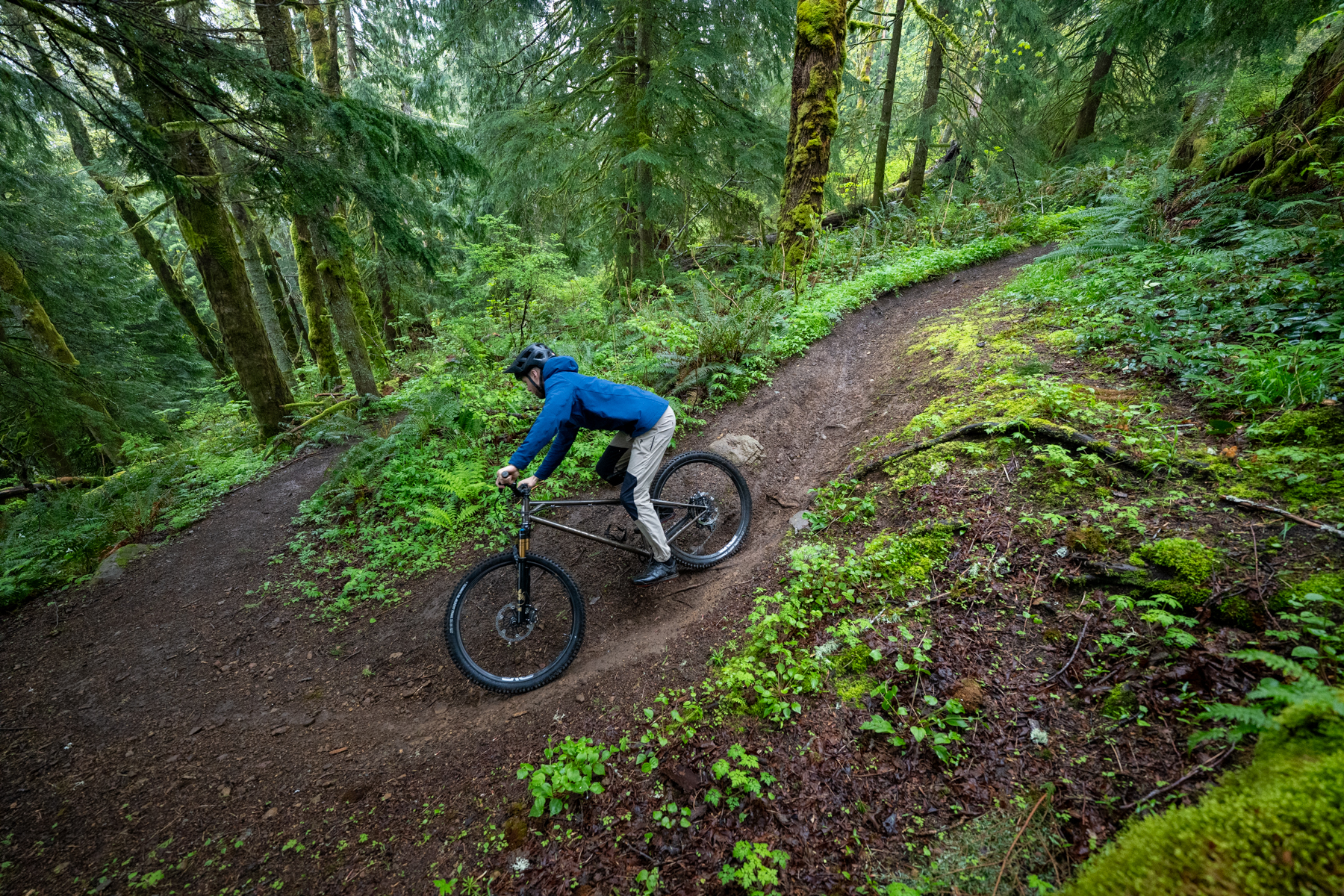
Given that, writing up a review of the Albert before the trails dried out again wouldn’t do it justice. Fortunately, I’ve now been able to spend time with the Albert across a wide spectrum of conditions, from mid-winter PNW slop to full-on moon dust, and a whole lot in between. So let’s get into how it’s performed.
[For more on the design of the Albert and Schwalbe’s new radial casings, check out our First Look.]
On-Trail Performance — Schwalbe’s Trail Pro Radial Casing
We’ll start with the feel of the Albert’s casing, since Schwalbe’s new radial construction is such a big part of the story, and then bring it back around to the performance of the tire as a whole.
In short, the way that the Trail Pro Radial casing deforms feels notably different from more traditional casing constructions, particularly as you tip the tire through a range of lean angles (e.g., entering and then exiting a high lean angle corner).
The best way I can describe it is that the radial casing feels like it flattens out more and widens the contact patch (laterally) compared to a more typical tire construction. But the radial casing does this without feeling squirmy in the way an underinflated tire does.
That sensation is most noticeable on relatively firm surfaces, where it feels like the side knobs engage well across a wider range of lean angles than they do on a traditional-casing tire. In turn, this delivers impressively consistent-feeling grip as you initiate a corner.
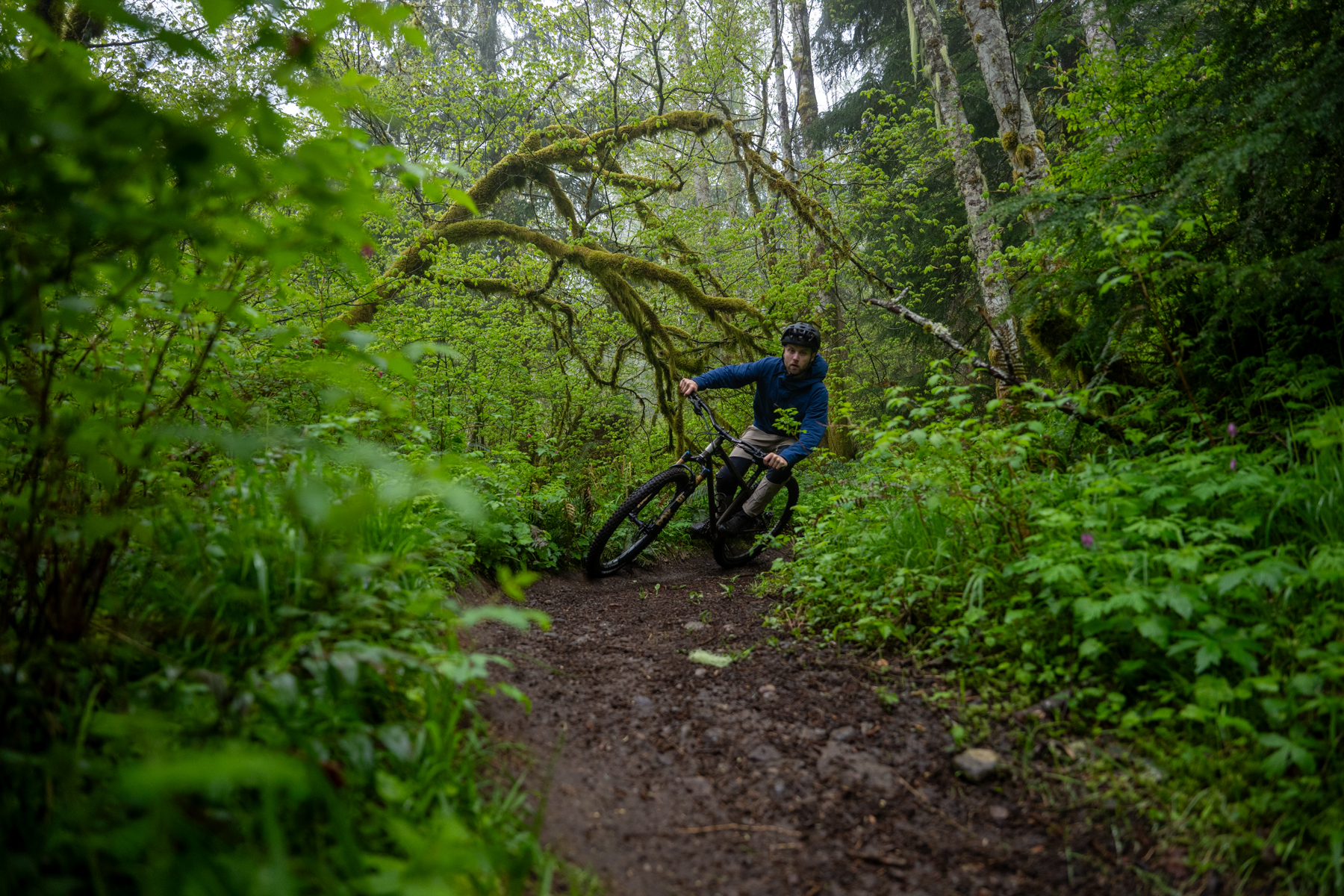
On most tires (to varying degrees), you need to commit to getting the tire over on edge to get the side knobs fully engaged. The Albert Radial does it relatively quickly, while having those side knobs continue to hold at higher lean angles, without feeling like it’s easy to lean past them to the point where they start to lose grip again.
At least, that’s if you get your pressures right. For me, that means running a notch higher pressure than I would in a tire with a comparable but more conventional casing. My exact preferred pressure varies a bit depending on the conditions and the bike I’m testing on. E.g., I need to run a bit more pressure, especially in the rear, on my hardtail since it takes more sharp impacts without any suspension to dull them. But I wound up around 27 psi front / 29 psi rear in the Trail Pro Radial casing. For reference, with a comparable but conventional casing (e.g., Maxxis Exo+), I’d often run about 24 psi front / 26 psi rear. I’ve got a more limited amount of time on the Gravity version of Schwalbe’s radial casing, but I tend to run that around 1-2 psi lower than the Trail.
I have found that the radial construction feels a bit more sensitive to pressure than more traditional casings. With too little air, the radial-casing sidewalls start to fold over and feel squirmy; with too much, the undamped rebound as the tire quickly springs back from being compressed feels noticeable.
That’s true of most tires to some extent, for sure, but the window on the radial construction feels notably tight. The Gravity version (unsurprisingly) offers a bit more sidewall support and opens up a touch more leeway there, but it still takes relatively careful monitoring of your tire pressures.
On-Trail Performance — Albert Tread Pattern
As for the Albert tread pattern, I’ve gotten along with it pretty well on surfaces that are generally on the firmer, drier end of the spectrum; the softer and looser things are, the more I’d rather be on something with a blockier, more open tread.
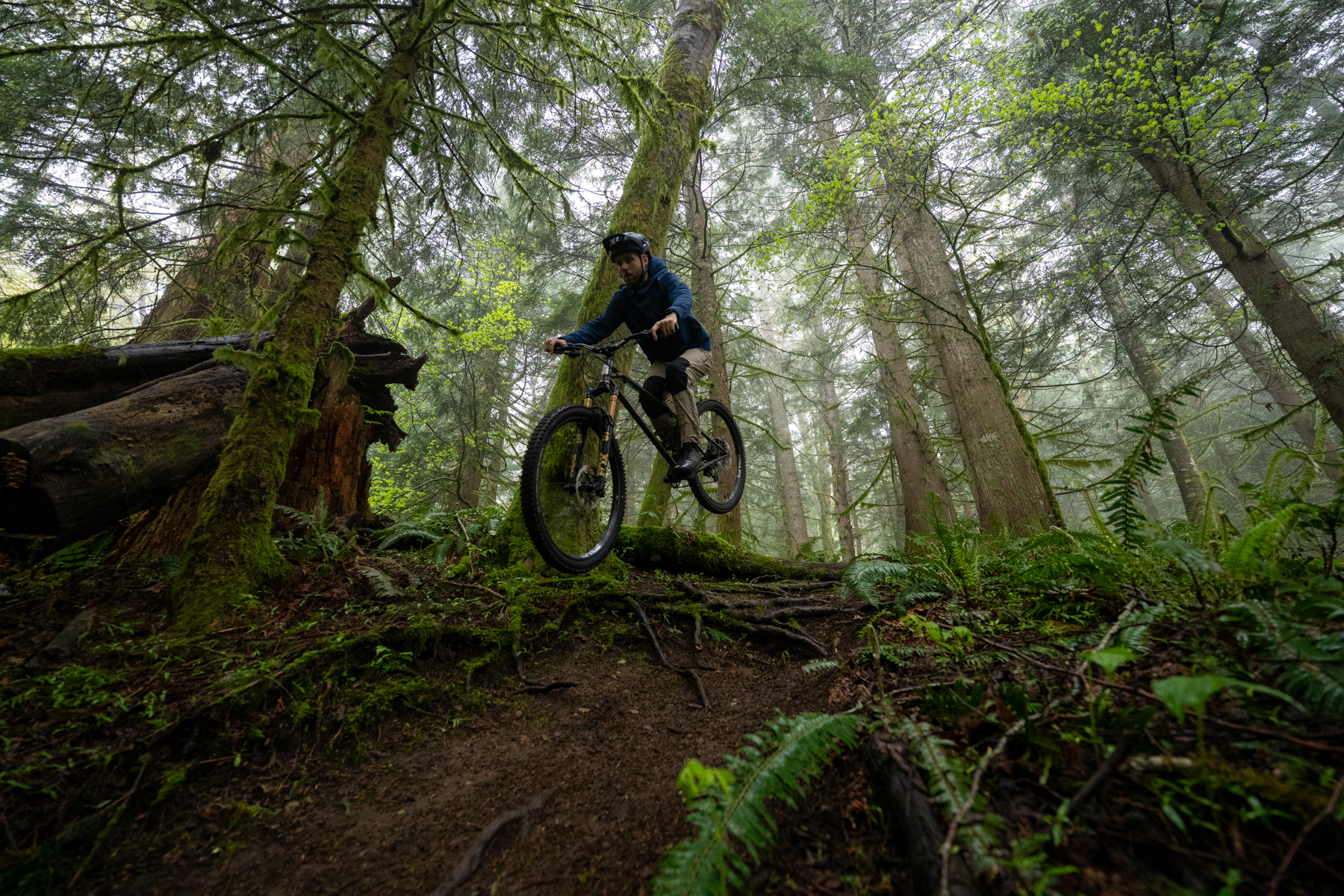
The Albert’s tread isn’t particularly deep, and its knobs are relatively tightly spaced. That’s a good recipe for a tire that rolls reasonably well and doesn’t feel squirmy and vague on firmer surfaces, with fairly predictable tradeoffs as the soil gets softer and you need the knobs to dig deeper to find grip. The Albert still works pretty well in shallower loose-over-hard conditions and/or when there’s some moisture in the soil, but its limitations start to show in very deep moon dust, and once things get legitimately wet.
Of course, Schwalbe has other tires for those conditions — starting with the Magic Mary — and it’s the Albert’s hardpack performance that really stands out. Particularly if you want a tire that has a lot of cornering grip on firmer surfaces and maintains that grip very consistently across a range of lean angles, the Albert really stands out.
The Albert’s braking traction is also fairly good if things are firm-ish (including shallow loose-over-hard conditions), but braking grip falls off fairly quickly once there’s enough moisture in the soil for its tight-ish spaced tread to start to pack up.
I’ve also found that the way the Albert offers relatively consistent grip across a range of lean angles requires a bit of a change in how you approach a corner, especially in loose-over-hard conditions where grip is at a premium. On true hardpack, when there’s not much of a loose, skatey-feeling layer on top, the Albert hooks up very directly and consistently; it’s easy to trust that grip and rail around corners at speed.
But as the trail surface deteriorates and there’s less overall grip available, I’ve historically preferred to initiate a turn with more of a drift rather than relying on the limited available traction and getting the side knobs to hook up right away as I initiate the turn.
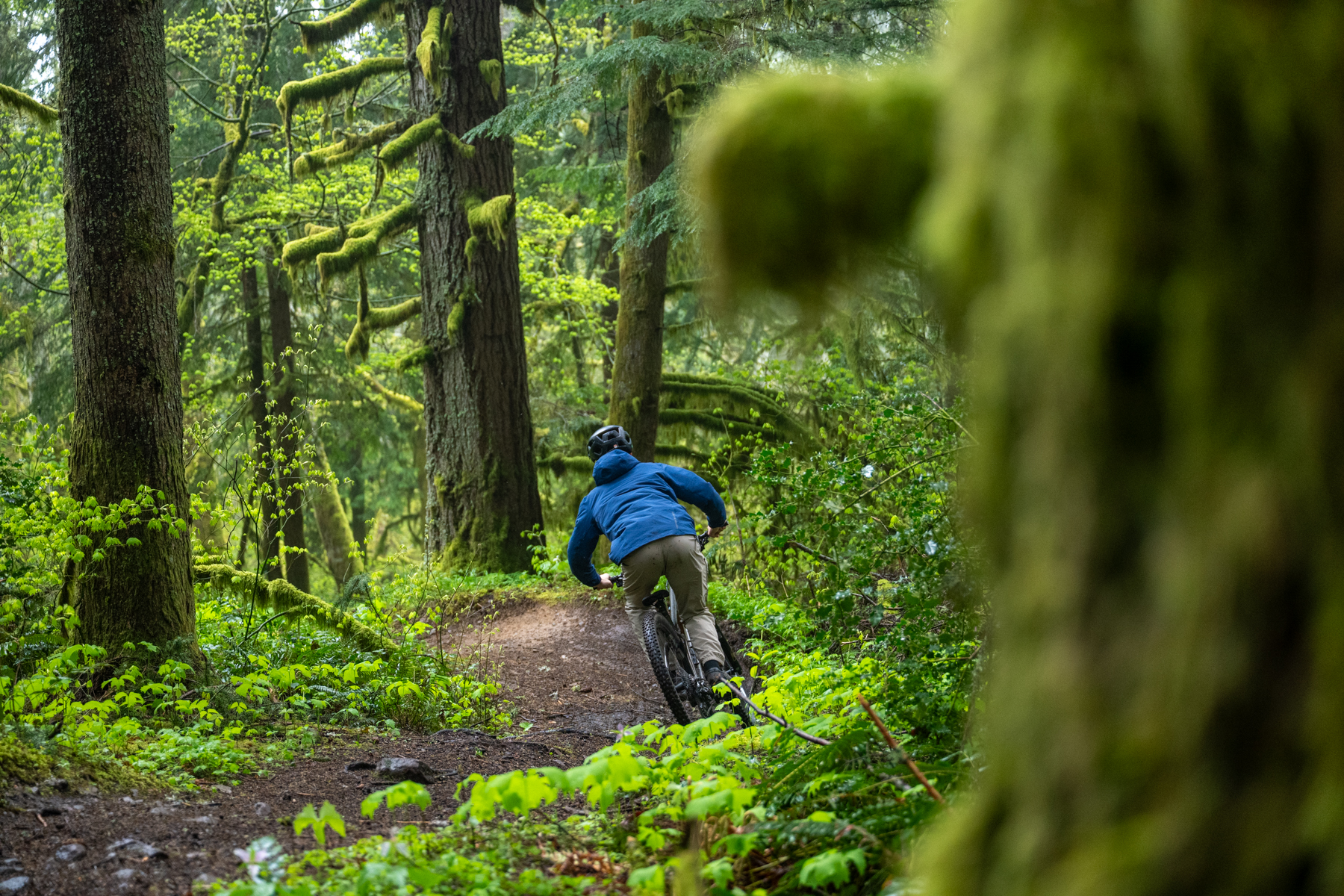
I’ve found my preferred approach to be harder to do on the Albert than it is on a lot of other tires. With the Albert, there’s less of a zone at moderate lean angles where the tire offers less grip and consequently starts that drift, and also less leeway to tip the bike over farther to dig the side knobs in and catch the drift. As such, I’ve had better results taking a less drifty approach on the Albert and just trying to get them to hook up from the start.
Now, that consistency in the Albert’s cornering grip is likely to feel confidence-inspiring in those conditions, particularly for folks who aren’t typically cornering super aggressively on loose-over-hard surfaces and aren’t often deliberately drifting the bike in those scenarios. But the more you’re trying to corner as hard as possible when things are dry and loose, when a certain amount of drifting becomes something of an inevitability, the more I’d worry about the Albert feeling less intuitive in those situations.
Interestingly, I’m most impressed with the Albert’s rolling resistance in conditions that are at least a little soft and damp — where it feels notably quick. It still rolls respectably well on firmer surfaces, but isn’t as impressive there.
My hunch — and it is just a hunch — is that the Albert tread pattern rolls pretty well in general, but that the radial casing comes with a slight increase in rolling resistance compared to a more traditional one (which Schwalbe acknowledges). On firmer surfaces, where the casing has to deform more to spread out the contact patch, that impact is more pronounced; when the ground has some give to it and the tire doesn’t have to flatten out as much, it matters less.
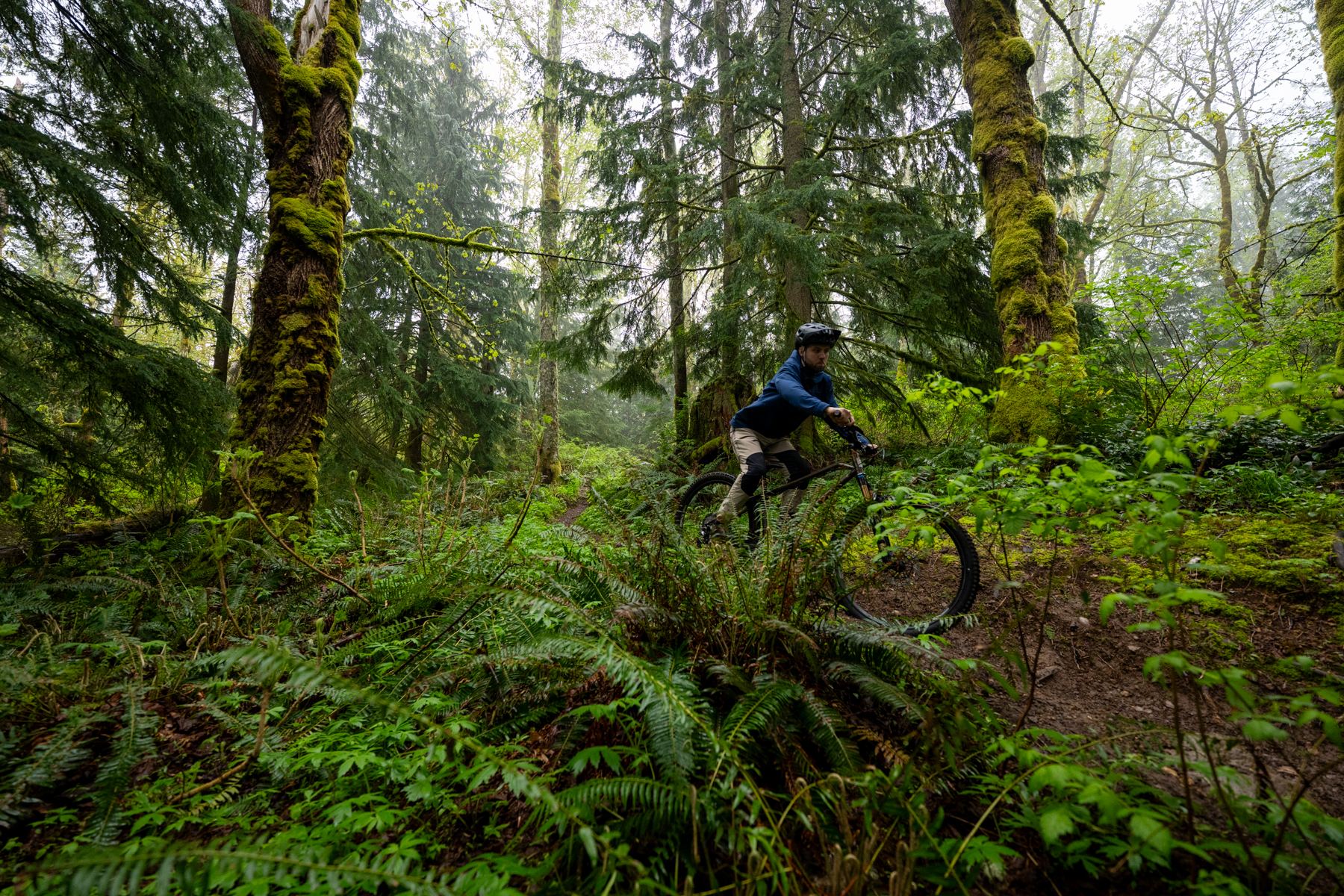
Bottom Line
I was curious about the new Albert tire largely because of its new radial construction, and Schwalbe is absolutely on to something with the new casing. It’s got its tradeoffs (what doesn’t?), and the change in feel won’t work for everyone in every situation. But it is genuinely different from more traditional tire constructions, in ways that have real benefits.
And it’s not just the casing that’s interesting — the Albert is a good tire, as a whole. It’s decidedly oriented toward drier, firmer conditions, but for folks seeking a tire for those conditions, the Albert rolls passably well and offers very consistent grip across a wide range of lean angles.

Loving it as a New England rear tire –
2.5 Trail Pro Soft with an equivalent Magic Mary Ultra Soft up front.
I absolutely hated the Albert as a loose over hard tire, especially up front. It’s very grippy on the hardpack as you discuss, but in the loose, there’s no feedback from the side knobs as to when they’re about to break loose and slide. It led to a lot of puckered moments on sections of trail that I wouldn’t think twice about on a Maxxis Assegai or Conti Kryptotal Front. The MM version did better in those conditions, but suffered on the hardpack from too small of side knobs that squirm under load. The problem then is that the Radial casing makes it harder to tell when the squirmy MM side knobs are about to buckle and let loose. I think the Radial casing is interesting, and provides a nice feel, but Schwalbe’s tread patterns negate it.
I’d imagine Schwalbe must be working on the Tacky Chan in radial casing, which might be the solution for you?
I think you’re getting at something similar to what I meant about finding them hard to drift on loose over hard stuff. There is a good bit of grip still (again, more so if the loose bit is relatively shallow) but knowing when you’re at the limit of it isn’t the most intuitive.
How might this tire work with a traditional Maxxis Assegai 29×2.5…3C,,Front… With the same Albert radial in the back?
Seems the Maxxis might cancel out the drift or sketchy handling in the front and lend to broader traction in the rear.